-
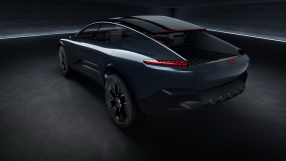
Audi activesphere concept - design and functions Audi activesphere concept - Design and function
Audi activesphere concept - Design and function
Following on from the Audi skysphere roadster in 2021, and both the Audi grandsphere sedan, and the Audi urbansphere space concept in April 2022, a four-door crossover coupé with an astonishingly versatile body design is now making its debut.
- Available media:
-


-
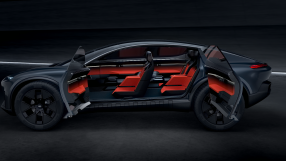
Audi activesphere concept - Mixed Reality operating concept Audi activesphere concept - Mixed reality operating concept
Audi activesphere concept - Mixed reality operating concept
The epitome of clarity and tidiness – this is the first impression for passengers as they climb into the interior of the Audi activesphere through the wide-open doors.
- Available media:
-


-
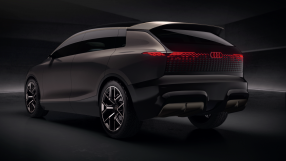
Audi urbansphere concept – Exterior design -
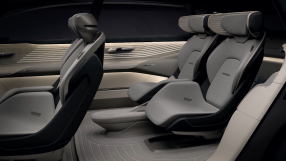
Audi urbansphere concept – Interior and space concept Audi urbansphere concept – Interior and space concept
Audi urbansphere concept – Interior and space concept
Like in the Audi grandsphere concept, the interior of the urbansphere blends space and architecture, digital technology, and authentic materials into a single entity. The lines emphasize the vehicle’s horizontal proportions. The open, wide interior supports the impression of a one-of-a-kind space.
- Available media:
-


-
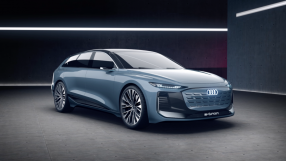
Audi A6 Avant e-tron concept - Design Audi A6 Avant e-tron concept – Design
Audi A6 Avant e-tron concept – Design
Based on its dimensions, the Audi A6 Avant e-tron concept clearly represents the upscale segments – 4.96 meters (16.3 feet) in length, 1.96 meters (6.4 feet) in width, and 1.44 meters (4.7 feet) in height, the same as the current models in the Audi A6/A7 series.
- Available media:
-

-
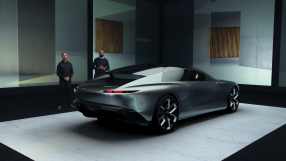
Audi grandsphere concept – Virtual Design Workshop -
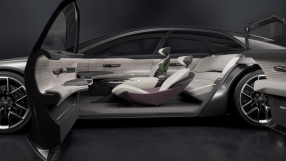
Audi grandsphere concept – Interior Design Audi grandsphere concept – Interieur Design
Audi grandsphere concept – Interieur Design
The doors of the Audi grandsphere concept are reversed so front and back touch; there is no Bpillar. The whole world of the interior opens up to passengers as soon as they climb in. But even before that, the Audi grandsphere has identified its passengers with a pathway identification – an innovative feature – that opens the doors and welcomes them with individually staged displays and ambient light.
- Available media:
-

-
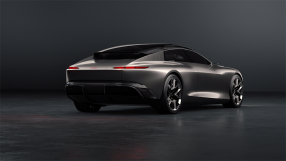
Audi grandsphere concept – Exterior Design Audi grandsphere concept – Exterior Design
Audi grandsphere concept – Exterior Design
At 5.35 m (17.6 ft.) long, 2 m (6.6 ft.) wide, and 1.39 m (4.6 ft.) high, the Audi grandsphere concept’s measurements reveal this sedan as an unambiguous example of the luxury class automobile. The 3.19 m (10.5 ft.) wheelbase indicates top value, which even overshadows the long version of the current Audi A8
- Available media:
-

-

Bidirectional Charging – Research project Research project – Bidirectional charging
Research project – Bidirectional charging
Increasing network stability, lowering electricity costs, and contributing to climate protection – that is the vision that Audi and the Hager Group are pursuing. The incorporation of the electric car into the domestic grid is at the core of an innovative research project on bidirectional charging
- Available media:
-

-

The J1 performance platform – the first e-tron GT concept -

Premium Platform Electric – PPE -

Audi BEV Platforms - MLB evo - J1 - MEB - PPE -

Modular Electrification-Toolkit – MEB -

Audi e-tron Sportback concept Audi e-tron Sportback concept
Audi e-tron Sportback concept
Design study and technology demonstrator, electric car and power pack in the guise of a coupé: A versatile concept car makes its world debut in the Chinese metropolis of Shanghai as the Audi e-tron Sportback concept. The brand with the four rings presents the study of a four-door Gran Turismo with a powerful 320 kW electric drive at the Auto Shanghai 2017 this spring. The formal idiom of the coupé with Lux Silver paint finish combines classic Audi elements with an array of trendsetting details: an electrifying architecture, tailored consistently to the technology and the package of the electric drive.
- Available media:
-

-

Audi e-tron quattro concept Audi e-tron quattro concept
Audi e-tron quattro concept
Aerodynamically-optimized design with a drag coefficient of 0.25, a purely electric e-tron quattro drivetrain with up to 370 kW of power output – the Audi e‑tron quattro concept is an all-electric, full-size class sport SUV. The technology study provides a firm glimpse at the production model to follow in 2018. And it is a statement about the future of electric mobility: It is sporty, efficient and suitable for everyday use.
- Available media:
-


-

Audi R18 e-tron quattro Audi R18 e-tron quattro
Audi R18 e-tron quattro
Audi is starting the 2015 season with a thoroughly revised R18 e-tron quattro. In the FIA World Endurance Championship (WEC) and in the Le Mans 24 Hours as the season’s pinnacle event, Audi is going to compete with a hybrid sports car in the 4-megajoule class.
- Available media:
-


-

Audi R8 e-tron: Drive system Audi R8 e-tron
Audi R8 e-tron
The Audi R8 e-tron weighs in at 1,780 kilograms (3,924.23 lb). Its body structure, including the side sections, weighs just 199 kilograms (438.72 lb), 23 kilograms (50.71 lb) less than that of the R8 Coupé, which already sets the bar very high with its aluminum-based ASF principle (Audi Space Frame). Here, Audi presents a new stage in the development of its ultra lightweight construction technology – a Multimaterial Space Frame, in which large parts made of carbon-fiber-reinforced polymer (CFRP) supplement the aluminum frame.
- Available media:
-

-

Audi Q8 sport concept Audi Q8 sport concept
Audi Q8 sport concept
Groundbreaking drive system technology and an accentuated sporty look: at the 2017 Geneva International Motor Show, Audi will be presenting another concept car which demonstrates the potential of the future Q8 model range. The Audi Q8 sport concept study demonstrates the vision Audi’s developers and designers have for the dynamic yet efficient SUV of tomorrow.
- Available media:
-

-

Audi h-tron quattro concept_ENG Audi h-tron quattro concept
Audi h-tron quattro concept
High range, swift refueling, sporty road performance: The Audi h‑tron quattro concept car can boast all these virtues. It combines a highly efficient fuel cell achieving an output of up to 110 kW with a powerful battery that can provide a temporary boost of 100 kW. The car can be fully refueled with hydrogen in around four minutes, and is then ready to drive for up to 600 kilometers (372.8 mi).
- Available media:
-

-

Audi prologue Avant Audi prologue Avant
Audi prologue Avant
The plug-in hybrid drive of the Audi prologue Avant is almost identical to the powertrain in the Audi Q7 e-tron quattro* which will be launched in summer 2015. The 3.0 TDI engine installed in the Audi prologue Avant outputs a maximum of 260 kW (353 hp), a powerful electric motor integrated in the eight-speed tiptronic contributes up to 100 kW. System output is 335 kW (455 hp), while system torque is 750 Nm (553.2 lb-ft). The eight speed tiptronic directs engine power to the quattro permanent all-wheel drive ensuring superior drive characteristics in any situation.
- Available media:
-


-

Audi R18 2016 en The new Audi R18
The new Audi R18 2016
For the FIA World Endurance Championship (WEC) and the Le Mans 24 Hours, Audi is emphasizing focal areas in the 2016 season: The Audi R18 that has been redesigned from scratch has almost nothing in common anymore with its predecessor. It features a more radical aerodynamics concept, including a new safety cell, its hybrid drive system is battery-operated for the first time, the V6 TDI engine has been revised, and new system solutions have been added. As a result, Audi’s LMP1 sports car is a vehicle that is more powerful and – once more – clearly more efficient than its predecessor. While the new R18 is Audi’s strongest race car to date, it consumes less fuel than any of the generations before it.
- Available media:
-

-

Audi A7 Sportback h-tron quattro Audi A7 Sportback h-tron quattro
Audi A7 Sportback h-tron quattro
It sprints from 0 to 100 km/h (62.1 mph) in 7.9 seconds and reaches a top speed of 200 km/h (124.3 mph). It can cover more than 500 kilometers (310.7 mi) on a single tank, with nothing more than a few drops of water leaving the tailpipe. The A7 Sportback h‑tron quattro* uses a 170 kW electric drive system with a fuel cell as the energy source. Each of the two electric motors drive the wheels of one axle. The Audi technical concept car is a true quattro and thus unique among fuel cell automobiles.
- Available media:
-


-

Audi R18 e-tron quattro 2014 Audi R18 e-tron quattro 2014
Audi R18 e-tron quattro 2014
The Audi R18 e-tron quattro is the most complex race car created in Ingolstadt and Neckarsulm to date. This not only applies to the mechanics. The electronics of the most recent LMP1 race car with the four rings is more sophisticated than ever before.
The age of electronic data transmission from the race car on track began for Audi in 1989. At that time, an Audi 90 quattro in the IMSA GTO series radioed eight parameters to the garage where engine speeds and a few pressures and temperatures were plotted on printouts – a tiny step from today’s perspective, but one that provided important insights at the time.- Available media:
-

-

Audi A8 hybrid Audi A8 hybrid
Audi A8 hybrid
The Audi A8 hybrid is designed as a parallel hybrid. Its combustion engine and the electric motor are located one directly behind the other and are linked by a clutch to work together, when necessary. Their interplay – referred to as “boosting” – briefly results in a peak system output of 180 kW (245 hp) and a maximum system torque of 480 Nm (354.03 lb ft).
- Available media:
-

-

Audi Q5 hybrid quattro Audi Q5 hybrid quattro
Audi Q5 hybrid quattro
The Q5 hybrid quattro is designed as a parallel hybrid – a convincingly efficient concept. Its electric motor generates 33 kW and is located directly behind the combustion engine, a 2.0 TFSI developing 155 kW (211 hp). Both drives can be disengaged by means of a clutch according to complex control logic. They transfer their power to a heavily modified eight-speed tiptronic that does not include a torque converter. The disc-shaped electric motor occupies the space previously occupied by the torque converter.
- Available media:
-


-
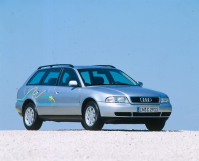
Audi duo
Audi duo
Audi can look back on over 20 years of experience in hybrid technology. The first generation of the Audi duo had its debut as early as 1989 – a concept car based on an Audi 100 Avant. A five-cylinder gasoline engine drove the front wheels, and a part-time electric motor developing 9 kW (12 hp) drove the rear wheels. Nickel-cadmium batteries served as energy stores. Another duo variant based on an Audi 100 Avant quattro followed two years later.
- Available media:
-

-

Brake system in the Audi Q5 hybrid quattro Drive management
Drive management
Electric motors offer interesting possibilities for intelligent drive management. Audi is making use of these in two fields of technology – energy recovery and quattro permanent all-wheel drive.
- Available media:
-


-

Audi Q3 cylinder on demand (COD) Rightsizing
Rightsizing
Audi is driving forward progress in its gasoline engines. The term Rightsizing incorporates a host of innovative technologies. The key is to design engines with the optimum combination of displacement, power and torque delivery, fuel consumption and operating characteristics. Cylinder deactivation in the 4.0 TFSI is one example.
- Available media:
-

-

iHEV system Predictive efficiency assistant
Predictive efficiency assistant
Audi is working on new, intelligent technologies to reduce fuel consumption even further. The predictive efficiency assistant uses data from the navigation system to enable the car to slow down in an anticipatory manner.
- Available media:
-


-
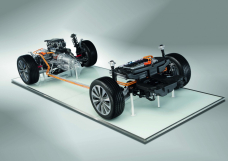
Hybrid technology
Hybrid technology
Audi offers full hybrids with lithium-ion batteries in three vehicle classes. The A6 hybrid (Combined fuel consumption in l/100 km: 6.2; Combined CO2-emissions in g/km: 145)**, the A8 hybrid and the Q5 hybrid quattro (Combined fuel consumption in l/100 km: 6.9; Combined CO2-emissions in g/km: 159)** use a parallel driveline – a highly efficient concept.
- Available media:
-

-
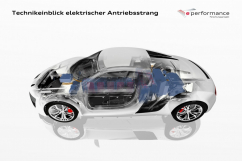
e performance research project
e-perfomance
research projectAudi is systematically working out all aspects of electric mobility from the ground up. The e performance research project – a think tank within the company – has developed a modular component system for electrically powered vehicles. This has resulted in a sporty research vehicle, the F12, in the framework of a research project sponsored by the German Federal Ministry of Education and Research (BMBF).
- Available media:
-

-
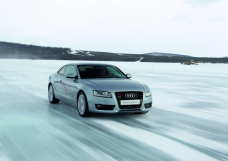
e-tron technology
e-tron technology
The term e-tron covers all Audi cars that can drive for longer distances on electricity alone. The brand is working on all aspects of the issue and with different approaches – from pure electric drive through plug-in hybrids to the electric quattro driveline.
The Audi R8 e-tron, the first low-volume electric vehicle to be produced by Audi, is an uncompromising, high-performance sports car. Its two electric motors deliver an output of 280 kW (381 hp) and 820 Nm of torque. All of the energy comes from the large lithium-ion battery that stores 48.6 kWh. The Audi R8 e-tron completes the sprint from zero to 100 km/h in 4.6 seconds, achieves an electronically limited top speed of 200 km/h and covers a range of around 215 km.- Available media:
-

-

Video: e-fuels Audi e-diesel and e-ethanol
Audi e-diesel and
e-ethanolAudi is promoting the development of new CO2-neutral fuels.** The underlying technology is completely new: Microorganisms utilize solar energy to produce synthetic ethanol and synthetic diesel from carbon dioxide and water.
The problem has been familiar for a long time, but it has yet to be solved: The combustion of conventional petroleum fuels pollutes the atmosphere by releasing carbon dioxide into it. Ethanol and diesel made from renewable raw materials such as maize and rapeseed generally achieve a better environmental balance, because the plants have already previously absorbed the CO2 that is released when they are combusted.** But such fuels are costly and compete with food agriculture – so they do not represent a long-term solution in a world whose population continues to grow increasingly rapidly.- Available media:
-


-

e-gas project Audi e-gas
Audi e-gas
By 2013, the Audi a-gas project will make the brand with the four rings the first automaker worldwide to have built a whole chain of sustainable energy sources.
- Available media:
-


-
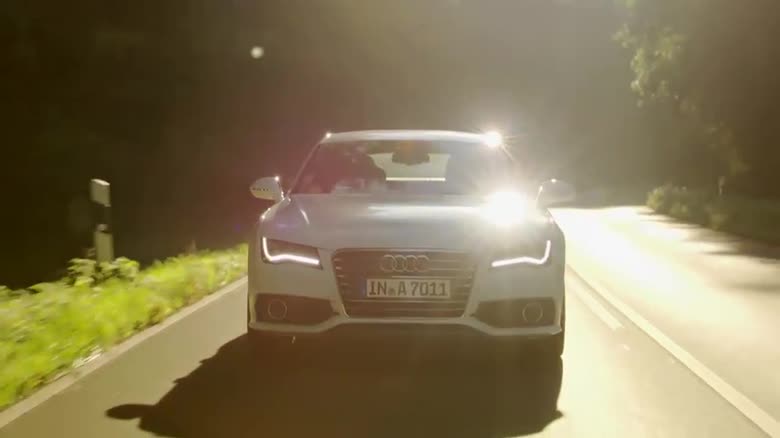
Umweltbilanz Ecobalance
Ecobalance
Audi creates an ecobalance for each new model that evaluates all phases of its lifecycle. The brand’s lightweight and efficient models are particularly effective during the operating phase – thanks to know-how in ultra-lightweight design and drive technology.
Ecobalance, also known as life cycle analysis or life cycle assessment (LCA), analyzes the environmental impact of a product throughout its entire lifecycle. It serves as a quantitative evaluation of ecological aspects such as the emission of greenhouse gases (including CO2)**, energy consumption, acidification or summer smog. In compiling ecobalances, Audi uses a standardized procedure in accordance with ISO 14040.- Available media:
-

-
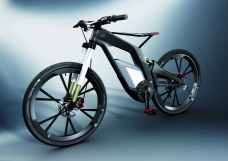
Audi e-bike Wörthersee
Audi e-bike Wörthersee
The Audi e-bike Wörthersee is a high-performance sports machine for sporty people. Its design reflects the concentrated dynamism of the brand, with CFRP playing a major role in its ultra-lightweight design principle.
The changed role that the car will adopt in the mobility of tomorrow is creating space in the world’s major cities for new means of transport – for lean, lightweight and efficient vehicles with two, three or four wheels, for e-pedelecs, e-skateboards, e-trikes or even e-quads. Audi designers are picking up on this trend and transferring it into the brand’s progressive design language.- Available media:
-

-
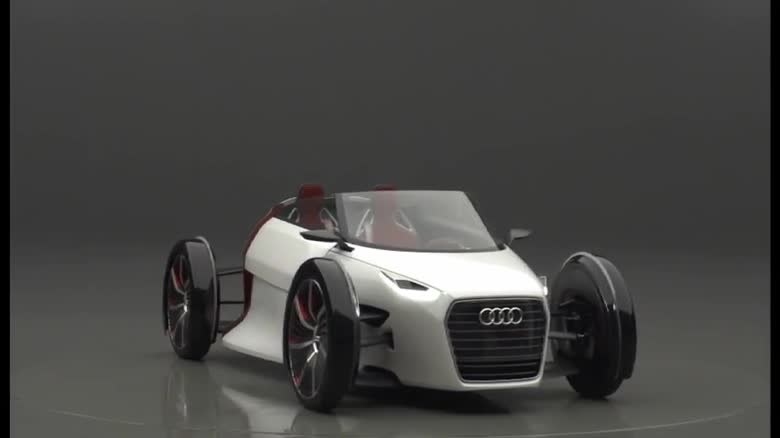
Audi urban concept spyder Audi urban concept Spyder
Audi urban concept Spyder
The Audi urban concept Spyder technology study is a showcase for the mobility of tomorrow. The electrically driven show car brings together elements of a race car, a roadster, a fun car and a city car.
- Available media:
-

-
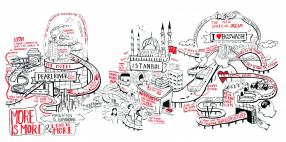
Audi Urban Future Award
Audi Urban Future Award
An important aspect of the Audi Urban Future Initiative is the award established in 2010. With a prize of 100,000 Euros, it is Germany’s most highly endowed architecture competition. This year, the award is being offered for the second time and is centered on the question of how mobility can become an engine for urban development. The five participating architecture and urban planning firms are called CRIT (Mumbai), Höweler & Yoon Architecture (Boston/Washington), NODE Architecture & Urbanism (Pearl River Delta), Superpool (Istanbul) and Urban-Think Tank (São Paulo).
- Available media:
-

Mobility for the future

Audi is hard at work on mobility for the future, with electrification of the powertrain playing a leading role. The new hybrid and electric vehicles form a strong cornerstone of the brand’s strategy for helping shape trends in society and developments in the markets.